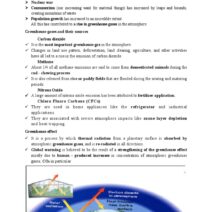In a world increasingly populated by technology, the presence of microwave cell towers has become a ubiquitous aspect of our urban landscapes. With the transition to 5G and beyond, these towers are not merely metal monoliths; they symbolize a contentious debate that transcends beyond mere signal quality. A question looms large: do microwave cell towers contribute to global warming? To unravel this enigma, we must dissect the myths, obscure facts, and scientific principles that shape this complex issue.
The fundamental principle of microwave technology lies in its ability to transmit data using electromagnetic waves. Think of these waves as undulating ripples spreading across a tranquil pond, where each ripple represents a packet of data traversing through the ether. However, the pervasive reach of microwave technology has prompted concerns regarding its environmental impact. Advocates argue vehemently that these towers contribute to climate change, likening them to the proverbial smoking gun. Yet, is that truly the case?
At the core of the argument lies the emission of greenhouse gases (GHGs). It is imperative to clarify that microwave cell towers themselves do not emit GHGs during operation. Instead, their function is predicated on electricity—a fact that necessitates an exploration of how that electricity is generated. If it comes from fossil fuels such as coal or natural gas, it undoubtedly contributes to the carbon footprint, indirectly linking these towers to climate change. However, even this connection is tenuous at best when viewed through the lens of energy generation transformation.
As the world pivoted toward renewable energy sources—solar, wind, and hydroelectric—the environmental ramifications of electricity generation could diminish significantly. The rise of energy-efficient technologies also plays an instrumental role in reducing the carbon emissions associated with microwave towers. Thus, the real culprits in the story of global warming are often the power plants generating the electricity, rendering the towers merely an avenue rather than the epicenter of environmental concern.
When addressing microwave cell towers, the narrative often warps into sensationalist rhetoric that blames these structures for myriad ailments or disasters. However, any empirical studies linking microwave radiation from cell towers to climate change remain elusive. The scientific community largely concludes that the non-ionizing radiation emitted by these towers lacks the energy necessary to disrupt molecular bonds or lead to biological consequences that could result in climate degradation.
A contrived comparison between microwave technology and climate change conjures images of myths akin to those of ancient folklore, filled with misinterpretations and exaggerations. The principles of thermodynamics dictate that energy cannot be created or destroyed; it merely changes form. Hence, framing microwave technology as a catalyst for global warming misses the broader ecological canvas. Here lies the paradox: while fears surround microwaves, actual climate change advocacy must focus directly on measurable factors such as carbon emissions from industrial activities, deforestation, and unsustainable agriculture.
Moreover, the global push for digital connectivity and enhanced communication infrastructures may indirectly serve as a bulwark against climate change. By enabling remote work, promoting telecommuting, and facilitating efficient communication, microwave towers contribute to reducing the need for transportation, which is a significant contributor to GHG emissions. This paradox presents a compelling case: the towers, once vilified, may actually play a role in mitigating some factors that exacerbate climate change.
Delving deeper into the environmental repercussions, another layer of complexity arises from the materials and processes associated with the manufacture and installation of microwave towers. Construction processes invariably involve resources that may contribute to environmental degradation. From the carbon footprint associated with mining raw materials to the deforestation required for tower placements, the entire lifecycle of these structures merits scrutiny. Indeed, any comprehensive analysis of their ecological footprint must consider these tangential impacts, juxtaposing the benefits of connectivity with their environmental costs.
The societal implications further complicate the equation. Communities may face polarized views on technology, where public perception often sways based on a myriad of factors, including media narratives and personal experiences. Dialogue must shift from fear-mongering to informed discussions, taking into account both the advantages provided by improved connectivity and the potential environmental ramifications rooted in industrial processes. The discourse around truth versus myth in microwave technology should emphasize evidence-based practices and community engagement.
As we navigate this intricate maze, one must not overlook the importance of sustainable practices. The future of microwave technology—and by extension, its relationship with the environment—demands responsible approaches in terms of production, installation, and maintenance. Strides in innovation can reduce energy consumption, improve efficiency, and minimize ecological impact corresponding to those towers. Hence, engaging with progressive technologies can foster a paradigm shift that indeed links communication infrastructure with sustainable practices.
In conclusion, it is essential to demystify the role of microwave cell towers within the broader context of climate change. They do not serve as direct instigators of global warming. Instead, they represent a duality—both a tool for enhanced connectivity and, contingent on energy sourcing, a potential contributor to environmental debates. The key lies in understanding the matrix of energy sources, technological impact, and community engagement in sustainability initiatives. As the journey toward a sustainable future unfolds, the conversation must evolve beyond fear and sensationalism, embracing a collaborative approach to address the pressing ecological challenges of our time.








